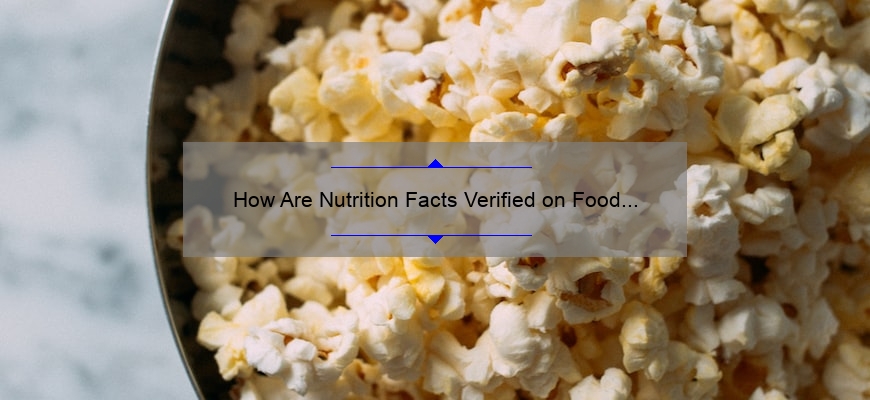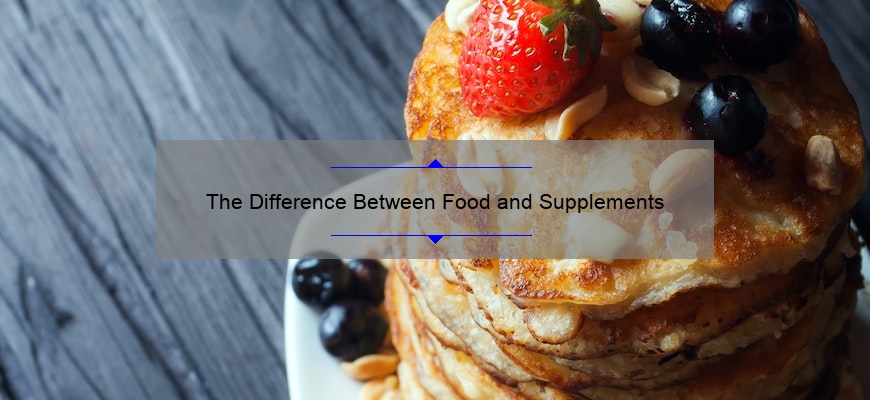When it comes to nutrition facts, several factors must be taken into consideration. First, food manufacturers have to compare their products to reference items. These items can be anything from peanut butter to fish oil. Using these materials helps the manufacturer improve the accuracy of their measurements. However, because not all foods are standardized, manufacturers cannot use the same reference material to measure every nutrient.
A bar will separate nutrient information for vitamins and minerals from information on other nutrients.
The FDA has established U.S. Recommended Daily Allowances (RDAs), which must be listed on food labels. These guidelines are based on those set forth by the Food and Nutrition Board of the National Research Council in 1968, and they were simplified to meet the needs of consumers.
Vitamin and mineral information on food labels shall be indented from other nutrient information by a bar. Vitamin and mineral information shall be expressed as percentages of RDI. The shares may be listed in two columns and shall be separated from other nutrients by a bar. In addition, vitamin and mineral information shall be listed under the column indicating % Daily Value (%DV).
The bar shall be divided into two columns. The first column shall list the identity of the food, and the second column shall list the quantitative amount by weight and percent Daily Value for each nutrient. The remaining columns should list the other nutrients.
Foods sold in bulk containers must display nutrition information. The labels of bulk containers must meet the requirements of paragraph (a)(2) of the act. Sometimes, the nutrition information may be listed on a separate panel. A third column may be used if the package’s surface area is more significant.
Food labels must show the RDI for vitamins and minerals. They should also indicate how much of each food’s vitamin or mineral. For instance, vitamin A should be listed first, followed by vitamin C and calcium. Vitamin D should also be recorded after vitamin A.
The serving size should also be stated clearly. This information should be presented with an identifying heading, such as “Nutrition Facts.” It must be in a more significant type than other information. The font size of this information shall be at least six points.
Food labels may contain information about other nutrients and vitamins, such as sodium. While the FDA no longer requires sodium, it is voluntary for manufacturers to include it on their food labels.
The FDA does not review structure/function claims.
Structure/function claims on food labels are statements that describe the role of a nutrient in the human body. These claims are commonly found on food labels, dietary supplements, and pharmaceuticals. Producers of conventional foods are not required to seek FDA approval for these statements. However, producers of dietary supplements must comply with additional regulations. Some food companies use these claims to highlight the benefits of their products.
Although FDA approval is not required for structure/function claims, FDA-approved claims are widely used. The agency can construe these claims as drug claims if they are not supported by reliable scientific evidence. The agency does not specify how many studies are needed to substantiate these claims. Still, it recommends that companies replicate the research results so that the overall scientific evidence will support the claim.
Without FDA approval, food companies must rely on third-party scientific evidence. The FDA prefers randomized, controlled, double-blind intervention studies. However, it also acknowledges the value of observational studies and research synthesis. But the agency urges companies to avoid examinations with a different target population, inadequate statistical power, or an inappropriate control group. As with any other food-related claim, companies should carefully evaluate the available research before deciding.
The food industry should be careful when claiming the benefits of a substance on a food label. There are two primary types of health claims: the health claim and the structure/function claim. The former describes the role of a nutrient in maintaining standard body structure and function. The latter describes the relationship between a substance and a reduced disease or health-related condition risk.
FDA’s reluctance to review structure/function claims on food labels is partly because the FDA is reluctant to extrapolate findings from one formula to another due to the different interactions between the formulas. For instance, “helps maintain cardiovascular function” or “relieves crushing chest pain” are both positive claims that focus on positive cardiovascular health. But “relieves crushing chest pain” implies disease-related conditions.
Accuracy of nutrient measurements
Food labels that state the content of various nutrients are not always accurate. Food manufacturers aren’t required to use standard reference materials, but many do. Using the SRMs of NIST is an effective way to increase the accuracy of nutrient measurements. It also provides an efficient means for ensuring that the label says what it says.
The accuracy of food label information varies widely, mainly due to the method of analysis and differences between batches. Also, the numbers may not be 100% accurate due to rounding rules, which decrease the precision of the best data. In the U.S., regulations require that the nutritional facts of a product must be accurate to a certain degree.
The USDA collaborates with several departments to get nutritional information from different sources. It receives nutritional data for beef and pork from the meat industry. However, these sources don’t always produce consistent information, which is why the labels on beef and pork products can be misleading. Additionally, the terminology used is often unclear, leading to misunderstandings.
The nutrient measurements on food labels are essential for individuals who want to keep track of their caloric intake. This information also helps consumers choose healthful foods. However, it is necessary to understand that the nutrient content in packaged food can vary considerably between consumers. This is because the absorption rate of nutrients varies among individuals.
A post-doc analysis of a subgroup of snack foods revealed that the average carbohydrate content was significantly higher than what was stated on the label. The fat content was considerably lower, but the protein content was not very different. These results suggest that snack food manufacturers should pay more attention to labeling macronutrients.
Reference values for other nutrients
Food labels show the amounts of vitamins and minerals in a product. R.I.s have been developed for labeling purposes and are consistent with dietary advice for the general population. For example, a 2000-kcal (8400 kJ) diet contains about 70 g of fat or about 31.5 percent of R.I. For yogurt, the nutritional label might say that it has 2.8 g fat per 100 g, or 4% of R.I. In addition, a phrase such as “percent of R.I.” will be listed next to R.I.
While most foods contain the recommended amounts of vitamins, some contain optional nutrients. Vitamin D is not one of these. In such cases, the nutrition label must include its value about a daily reference value. This information must be provided in a manner that is understandable to consumers.
Using the %DV system, food labels show the percentage of a nutrient’s ‘Daily Value’ in a serving. D.V.s are expressed in milligrams, micrograms, and grams and tell us how much a particular serving of food contributes to a person’s daily diet. This metric helps determine whether a specific food contains an adequate amount or needs to be supplemented.



